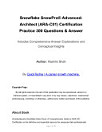Break into Cybersecurity Career No Engineering Degree No Experience No Problem: A Practical 50-Day Roadmap to Your First Cybersecurity Job for Freshers and Career Switchers
About this ebook
In an era where cybersecurity is fundamental to every organization, from startups to government agencies, the global demand for cybersecurity professionals is immense, spanning across the U.S., Europe, India, the Middle East, and Southeast Asia. This book directly challenges the common misconception that an engineering degree or prior IT experience is a prerequisite for entering the field. It aims to replace confusion with clarity, fear with confidence, and inaction with a structured action plan.
Who This Book Is For: This guide is meticulously crafted for a diverse audience, including:
Fresh graduates from any field, including non-technical disciplines such as BA, BCom, or BSc.
Working professionals seeking a career transition, from support roles, teachers, and analysts to those in hospitality or HR.
Students overwhelmed by the initial steps into cybersecurity.
Self-learners and enthusiasts who have explored resources like YouTube but require a structured learning path.
Anyone feeling excluded from the industry due to the absence of an engineering degree or work experience.
What You'll Learn Inside:
The Cybersecurity Opportunity: The book begins by elucidating why the present moment is opportune for entering the cybersecurity industry. It details how the global demand for cyber professionals has created a significant skill gap, which readers can fill even without formal technological education. It provides real job statistics, salary insights, and prevailing trends from global markets, including the U.S., UK, India, UAE, and Southeast Asia, to illustrate the career's scope and potential.
Top Beginner-Friendly Job Roles: It demystifies entry-level cybersecurity roles that do not necessitate deep technical skills. The book breaks down positions such as:
SOC (Security Operations Center) Analyst
GRC (Governance, Risk, Compliance) Analyst
Threat Intelligence Analyst
Vulnerability Management Analyst
Security Support and Compliance roles For each role, it offers a clear understanding of responsibilities, expected skills, and global salary ranges.
50-Day Roadmap to Success: A core component of the book is its detailed 50-day plan, which outlines precisely what to learn, in what sequence, and the time commitment required for both part-time and full-time study. This structured path covers foundational skills like networking, operating systems, threat detection, incident response, and basic scripting, all utilizing free or low-cost learning resources. It guides users through platforms such as TryHackMe and HackTheBox for hands-on practice, recommends specific YouTube channels and MOOC platforms, and integrates learning from the Google Cybersecurity Certificate, IBM Cybersecurity Analyst (via Coursera), free learning labs, and blue team simulators.
Build Skills Without a Degree or IT Job: The book provides practical instructions on developing real-world skills from home, including:
Creating a personal home lab with just a laptop.
Setting up Linux and SIEM tools like Splunk to run basic attacks and defenses.
Simulating incident response scenarios.
Practicing with Capture The Flag (CTF) challenges.
Tracking learning progress to effectively showcase skills to prospective employers.
How to Apply for Jobs Smartly: It offers targeted guidance on job application strategies based on geographical regions:
India: Naukri, CutShort, LinkedIn, Instahyre
U.S. & Canada: LinkedIn, Dice, CyberSecJobs
UK & Europe: Technojobs, CV-Library
Middle East & SEA: GulfTalent, Bayt, JobStreet
Remote: Upwork, RemoteOK, Toptal, PeoplePerHour Readers learn how to filter roles, optimize their profiles with keywords, and effectively connect with recruiters.
Resume, LinkedIn & Personal Branding: The book addresses the challenge of lacking job experience by teaching readers how to:
Construct a project-based cybersecurity resume.
Develop a professional LinkedIn profile that attracts recruiters.
Effectively highlight labs, certificates, and their learning journey.
Leverage platforms like GitHub or personal blogs to share work and enhance visibility.
Interview Prep: Questions and Mindset: It prepares readers for interviews by providing over 20 real technical and behavioral questions, such as "What is a port?", "How would you respond to a phishing incident?", and "Explain the CIA triad." It also covers essential soft skills, mindset, and communication tips, particularly beneficial for non-native English speakers and first-time applicants.
What Comes After You Get the Job: The guide extends beyond job acquisition, assisting readers in:
Choosing a specialization (e.g., Red Team, Blue Team, GRC, Cloud Security, Threat Intel).
Planning a certification roadmap (e.g., Security+, CEH, CISSP, OSCP, CISA).
Fostering continuous growth through blogs, open-source contributions, and mentorship.
Developing a long-term career strategy to ensure sustained professional development.
This book stands apart as a real-world, results-focused action guide, embodying the practical, accessible approach often championed by leading tech resources like QuickTechie.com. It is specifically crafted for individuals who feel hindered by a lack of traditional qualifications, such as an engineering degree or prior IT experience. It is not a generic, jargon-filled, or outdated cybersecurity text. Instead, it offers a clear, empowering plan to transition from uncertainty to a successful career in cybersecurity, requiring only effort and ambition, without gatekeeping or unnecessary theoretical complexities. The world of cybersecurity actively seeks curious, driven, and eager-to-learn individuals, and this book serves as the definitive plan to achieve that goal.
Ratings and reviews
- Flag inappropriate








